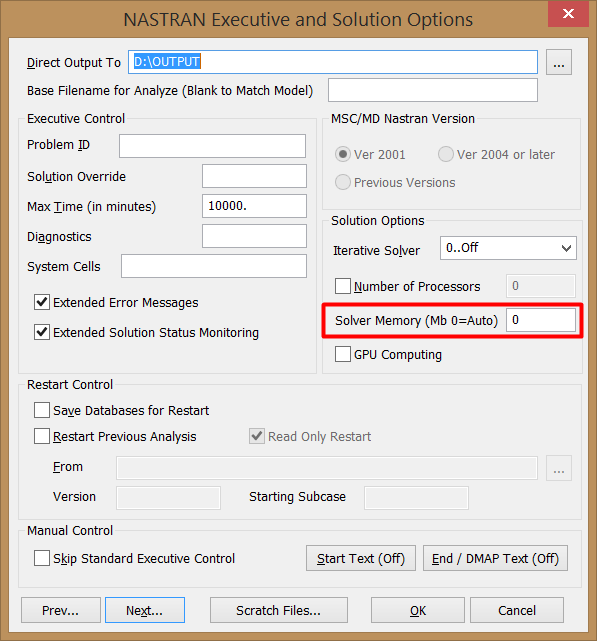Hi:
I have used linear static analysis for many years but have recently switched from NEiNastran to NX Nastran which gives me the ability to do non-linear static.
My test model is of a four bar test on a composite panel. The foam core is non-linear solid elements with skins of laminate shell elements. For the foam material a function was entered with the approximate stress strain curve based on actual tests. The material properties seemed to work well on a smaller simpler model. With the four bar test a couple of runs generated fatal memory messages so I increased the database memory in the preferences, still in the "yellow" range. Following that the analysis seemed to be going OK from looking at the f06 file. All iterations were converging up to loopid 35 (23 hours or so). After that for an additional 10 hours, no more iterations were run, it stayed at loopid 35 with a load step value of 0.74 .
This is a long winded preamble to my question. What happens when the load applied in the case makes the material exceed the strain indicated in the function graph, which ends where the material breaks? I would expect a warning message or a fatal error, but none of these were generated.
Any help would be appreciated.
Tom
I have used linear static analysis for many years but have recently switched from NEiNastran to NX Nastran which gives me the ability to do non-linear static.
My test model is of a four bar test on a composite panel. The foam core is non-linear solid elements with skins of laminate shell elements. For the foam material a function was entered with the approximate stress strain curve based on actual tests. The material properties seemed to work well on a smaller simpler model. With the four bar test a couple of runs generated fatal memory messages so I increased the database memory in the preferences, still in the "yellow" range. Following that the analysis seemed to be going OK from looking at the f06 file. All iterations were converging up to loopid 35 (23 hours or so). After that for an additional 10 hours, no more iterations were run, it stayed at loopid 35 with a load step value of 0.74 .
This is a long winded preamble to my question. What happens when the load applied in the case makes the material exceed the strain indicated in the function graph, which ends where the material breaks? I would expect a warning message or a fatal error, but none of these were generated.
Any help would be appreciated.
Tom

